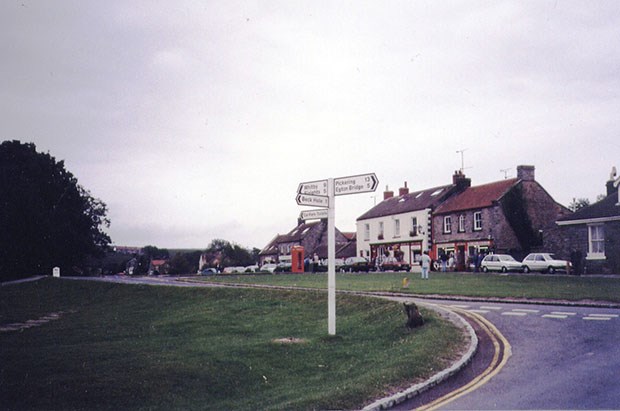There is something about desolate landscapes that inspires awe. Standing at the crest of a pass between Wensleydale and Swaledale, I look out across the fells of Yorkshire, at the scudding clouds throwing patterns of light and shadow over the purple heather and bracken covered hills and I'm silenced by their stark beauty.
Behind me, a group of people walk gingerly around the edges of deep rocky fissures - known as the Buttertubs. These were used in bygone times by farmers who often had to travel long distances - usually involving overnight stops - to sell their produce in market towns. The farmers would place their butter and cheese in sacks which would then be suspended in these cool "Buttertub" caverns to preserve their freshness. This is just one example of what undoubtedly was a hard-scrabble existence for the farmers and lead miners who lived and worked on these wild and lonely moors. When the mines closed down at the end of the last century, people were forced to leave Swaledale and look for work elsewhere. Most of them never returned. Today only a few scattered farmsteads endure the severe winters and the hills stretch bleak and windswept to the horizon.
Not all of the Yorkshire Dales National Park is barren wilderness. Wensleydale is picture-postcard pretty: green undulating pasture land where black-faced sheep graze - and occasionally amble across the road. Eighteenth century slate barns stand in the centre of hay fields, and low stone walls weave over the hills. The river Ure gurgles past medieval inns and the ramparts of old castles. Small market towns bustle with activity, their winding cobbled roads flanked by craft shops, country pubs, rural cottages, stone churches, parks and gardens. At a little pub where I order a pint, the owner Alf, is a bearded gnome with a gap-toothed grin. He tells me that the pub stands near
a path known as the Corpse Way. In medieval times, remote villages at the upper end of Swaledale didn't have churches, and anyone wanting to be buried in consecrated ground would have to be carried 15 or 20 miles all the way to Grinton.
"People had nowt to spend on coffins," he says, "so t'body would be wrapped oop in a sheet and popped into a large wicker baaskit, which would be carried by t'men of t'village."
On a hot summer's day the whiff from the basket would get pretty strong, and the men would light their clay pipes to mask the odour. At intervals along the Corpse Way were barns known as "Dead Houses" where the weary pall-bearers could plunk the basket down while they went off to the local pub ("Laaike oower plaace 'ere," Alf says) to knock back a few tankards of ale and fortify themselves for the rest of the trip. "Noo-a-days," he adds, "there's a charity walk wha's held every year on t' Corpse Way."
The prize? A little lapelpin in the shape of a coffin! The Dales are full of legends of giants, ghosts and blood-thirsty robber-barons. In more recent times, however, it is James Herriot's tales that have delighted readers. No visit to the Dales would be complete without seeing Thirsk, the little town where he lived and worked, (his model for the fictional village of Darrowby) and St. Mary's church where he married Helen.
The TV series, All Creatures Great & Small was filmed not in Thirsk, but in Askreigg as well as several other locales in the Dales and I am as thrilled as any 'Looky-Luke' tourist to click several shots of Skeldale House and The Drovers' Arms.
An old Yorkshire proverb says: "If tha does owt for nowt, allus do it for thysen." (If you do anything for nothing, do it for yourself). Good advice! The Dales are worth visiting for 'thysen.' Travel Writers' Tales is an independent newspaper syndicate that offers professionally written travel articles to newspaper editors and publishers.



